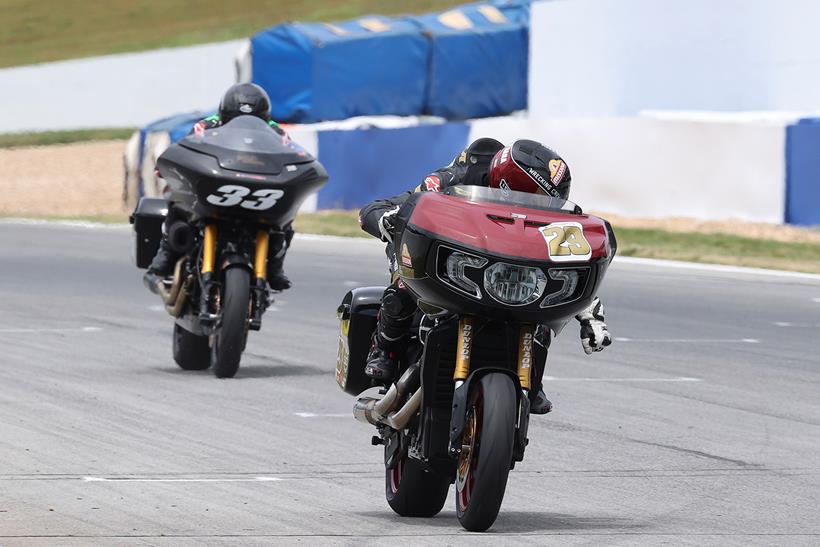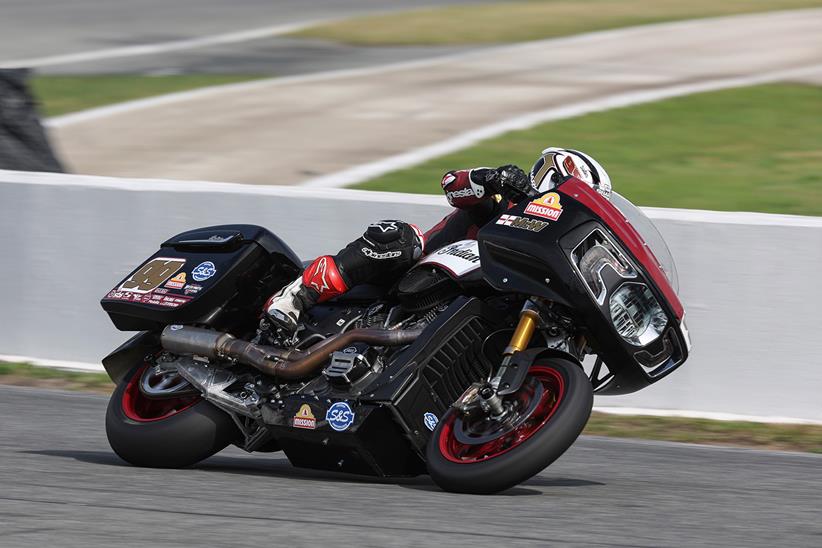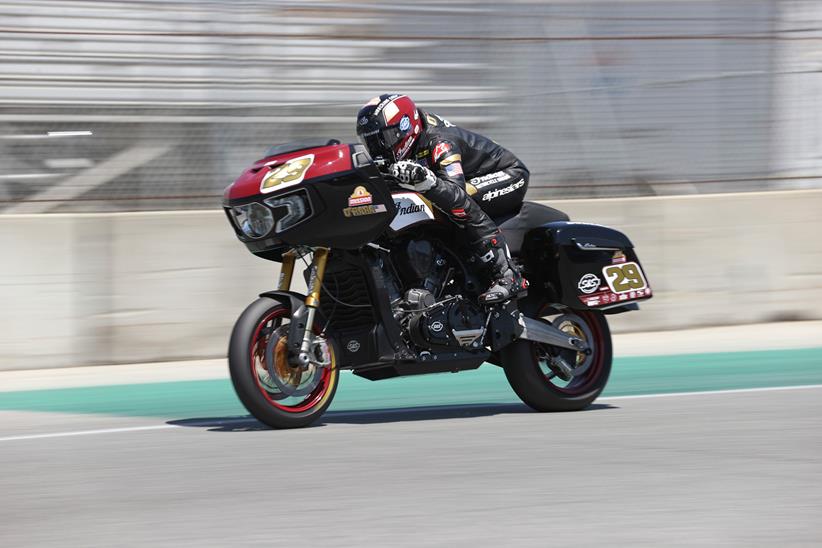Indian ditch the chrome to become the face of American performance
One hundred and seventy-seven mph. That was Jeremy McWilliams’ top speed as he fired up the banking at the Daytona on his way to taking the top spot at the King of the Baggers. A few seconds quicker and that great big piece of American muscle would be fast enough to qualify for a spot in the proper superbike races of AMA.
Cast your eye across the Indian range these days, you’ll see the tassels and 3000rpm red lines are gone, replaced with bikes producing in excess of 100bhp, shod with sticky tyres and sat on Öhlins suspension.
With its 17in wheels the FTR is now challenging more typical performance nakeds while the latest Pursuit mega tourer has radial Brembos, electronic suspension and more computers than you know what to do with. Believe it or not, this was Indian’s plan all along.
Related articles on MCN
- 2021-on Indian FTR bike review
- Indian FTR flattrack special
- Indian Challenger-based Pursuit raises the bar for luxury travel

“I was around in 2011 and back then it was intentional to reconnect the brand to its past,” says Gary Gray, VP of Racing, Product and Service. “We could have done a lot of things but we felt it was important to connect to the history.
“I know people get worried when big companies buy a brand and we didn’t want people to think we’d messed it up. But even back then, there was a plan to modernise. We just had to earn the right to change it first.
“The FTR750 was our first chance to say we can do this and prove that the leather and shiny buckles brand can build a performance bike. And look, now we’ve won five championships in a row and that bike led to the FTR1200.”
The European market is now 30% of Indian’s business and believe it or not, we like bikes that stop, go and turn, which is something that traditional American brands are not known for but it’s an image Indian are keen to ditch.

“Performance is what matters to European riders,” says Grant Bester, VP of International. “It’s a cool way for us to evolve. We don’t want to be defined as just a ‘cruiser, loads of torque, stick it in third gear’ sort of company.”
Pointing to King of the Baggers racing, where Indian have had major success, Ola Stenegard, Director of Product Design, says it’s as much about attracting a new audience as it is about proving how fast their bikes can be.
“There’s a whole new crowd of people, younger people, discovering American touring bikes and they come from a performance background,” says Stenegard. “They come to baggers and they think ‘I want to make this bumblebee fly’ and we want to help them do that. So for us to take a bagger and take it on the race track, that clearly spills over into the street bikes.”
“FTR has shown we can be leaders in new categories and step outside our traditional space,” adds Bester. “Right now we’ve delivered seven platforms with nearly 70 models in an eight-year period but we’d be naïve to say there isn’t an opportunity to jack that up even wider.”






